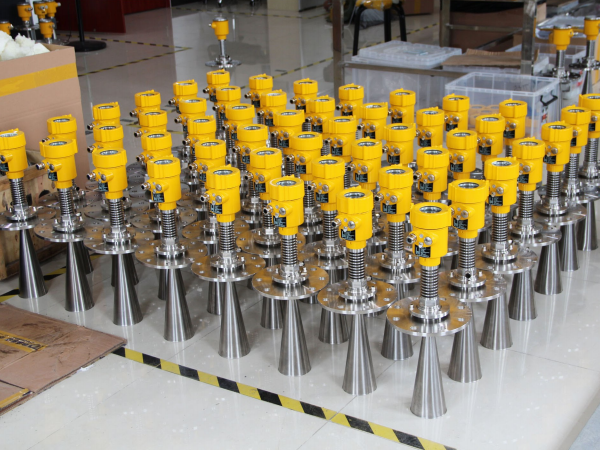In the dairy industry, level measurement of milk tanks is a key step to ensure production efficiency and product quality.
Radar level meters play a vital role in such applications due to their high accuracy, non-contact measurement, and suitability for a variety of media and environmental conditions.

Understanding the characteristics of the milk tank level is the basis for understanding and implementing effective measurement. Milk in the milk tank is a liquid with specific physical properties, including conductivity and dielectric constant, which affect the propagation and reflection of radar waves.
The low dielectric constant of milk means that radar waves can penetrate and be reflected back by the liquid surface, making radar level meters an ideal choice for measuring its level.
The working principle of radar level meters is based on microwave technology, that is, measuring distance by emitting microwave signals to the liquid surface and receiving the reflected signals.
This non-contact measurement method not only avoids the possible contamination problems caused by direct contact with milk, but also has relatively low maintenance costs and high reliability due to the lack of moving parts.

In practical applications, radar level gauges are installed on the top of milk tanks to continuously monitor the level of milk in the tanks. Since milk may produce foam or sediment during storage, this requires radar level gauges to have good signal processing capabilities to distinguish between liquid surface reflections and other interfering reflections.
Modern radar level gauges usually use high-frequency radar waves and combine them with advanced algorithms to optimize measurement accuracy to ensure accurate level measurement even in the presence of foam or sediment. In addition, the design and material of the milk tank will also affect the selection and installation of the radar level gauge.
For example, if the milk tank is made of metal, then you can choose a radar level gauge model that is more suitable for metal containers.
For milk tanks made of plastic or other non-metallic materials, it is necessary to ensure that the radar waves can effectively penetrate and be correctly reflected.

In the dairy industry, hygiene standards are extremely strict, so the materials and designs of radar level gauges must meet food-grade standards and be easy to clean and disinfect.
At the same time, considering the temperature control requirements for milk storage, radar level gauges should also be able to work stably in a changing temperature environment.
The application of radar level gauges in milk tank level measurement demonstrates its importance in the dairy industry.
By accurately measuring the liquid level, dairy producers can better control the production process, ensure product quality, and improve production efficiency.
